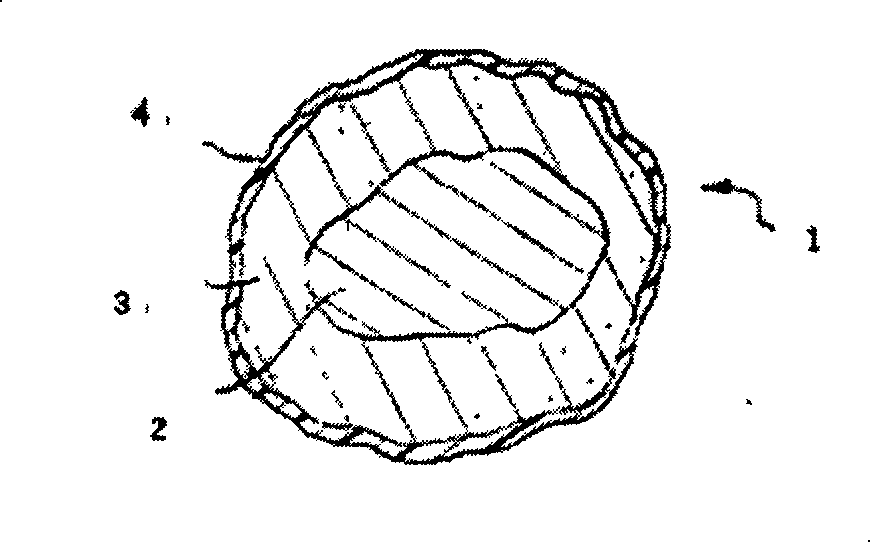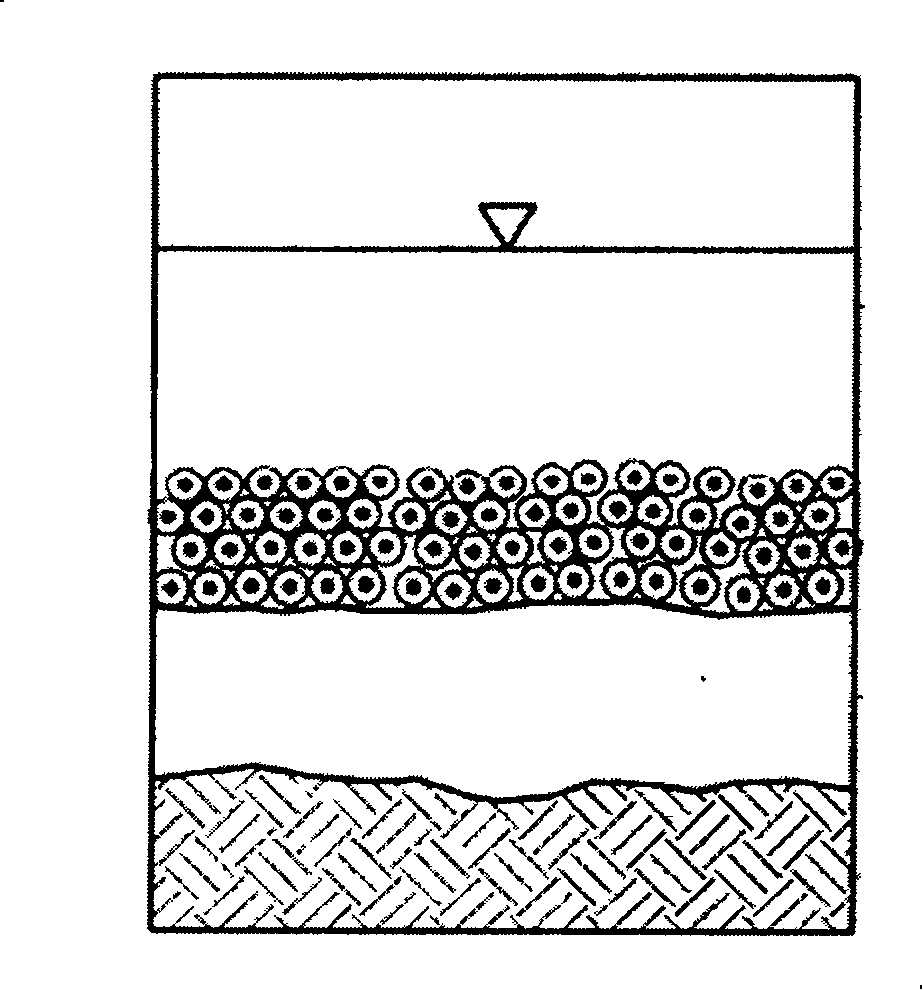Method for treating polluted bottom mud by using closure material
A technology of polluting sediment and using caps, which is applied in the field of environmental engineering, can solve the problems of single physical barrier effect of capping materials, impact on habitats, and single means, and achieve small penetration, in-situ stability, and high-efficiency adsorption Effect
- Summary
- Abstract
- Description
- Claims
- Application Information
AI Technical Summary
Problems solved by technology
Method used
Image
Examples
Embodiment 1
[0022] Use 2-25mm sandstone and soil particles as the core layer of the inner layer, and its weight percentage ratio is 20%;
[0023] Phosphate rock and carbonatite rock are used, crushed to a particle size of 100-200 mesh, as the middle layer sealing layer; the weight percentage ratio is 78%;
[0024] Using cement and lime as the outer protective cementation layer, the proportion of its weight percentage is 2%;
[0025] Through processing, a small spherical capping material in the form of a three-layer structure is formed. (See figure 1 )
[0026] During the actual treatment operation, the granular capping material can be added to the surface of the contaminated sediment to be treated through the delivery vehicle or the special delivery pipeline. Its usage, that is, its status at the beginning of delivery and after a period of time, can be seen in the accompanying drawings figure 2 with image 3 .
PUM
| Property | Measurement | Unit |
|---|---|---|
| particle diameter | aaaaa | aaaaa |
| particle size (mesh) | aaaaa | aaaaa |
Abstract
Description
Claims
Application Information
 Login to View More
Login to View More - R&D Engineer
- R&D Manager
- IP Professional
- Industry Leading Data Capabilities
- Powerful AI technology
- Patent DNA Extraction
Browse by: Latest US Patents, China's latest patents, Technical Efficacy Thesaurus, Application Domain, Technology Topic, Popular Technical Reports.
© 2024 PatSnap. All rights reserved.Legal|Privacy policy|Modern Slavery Act Transparency Statement|Sitemap|About US| Contact US: help@patsnap.com










